Truth born in the dispute about the ratings of popular programming languages

Image zdnet.com site
Many inquisitive individuals want to know everything. Sometimes the accumulation of knowledge turns into an insight that has no practical application. However, in the IT industry, knowledge and skills acquired and tested “in combat” have the greatest value - in practice. Therefore, some discussions, for example, about programming may seem too speculative.
However, time shows that the question of which programming language is the most popular has a pronounced practical aspect.
')
Novice programmers need to know in which direction to start a career path. Experienced programmers need to know in which direction to keep moving. Manufacturers of software development tools need to somehow predict the demand for their products and take into account popular trends.
It is important for IT entrepreneurs to know in what language and use of which technologies it is necessary to conduct development in order to avoid the problem of hiring the necessary specialists.
In the end, developers of programming languages also need to make a start from something.
Programming language popularity metrics:
• Number of references in search queries
• Number of mentions in job ads
• Number of books sold on a particular programming language
• An approximate estimate of the number of lines written in the language
• Number of projects in SourceForge, Freecode and GitHub written in any language
• The number of posts on the forums and the frequency of appearance in the news feeds
• Number of language courses sold
• Number of students learning a language
• Number of YouTube videos dedicated to language
• Number of language posts on Reddit and Stack Exchange
Of course, the geographical distribution of popularity is also important. In some countries, C # is more popular, and in another place - Java.
David Gewerts put together fragmented ratings and tried to give an exhaustive answer to the question of which programming language was most popular in 2016.
He called for help the IEEE Spectrum tool , which allows weighing many factors and metrics, as well as changing the weight of the factor in the overall picture.
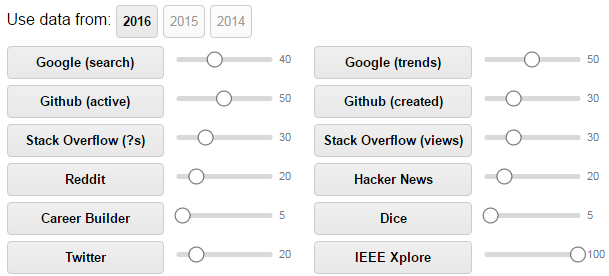
In addition, he focused on the following ratings:
Coding Dojo - takes into account the statistics of the demand for programming languages in the labor market:
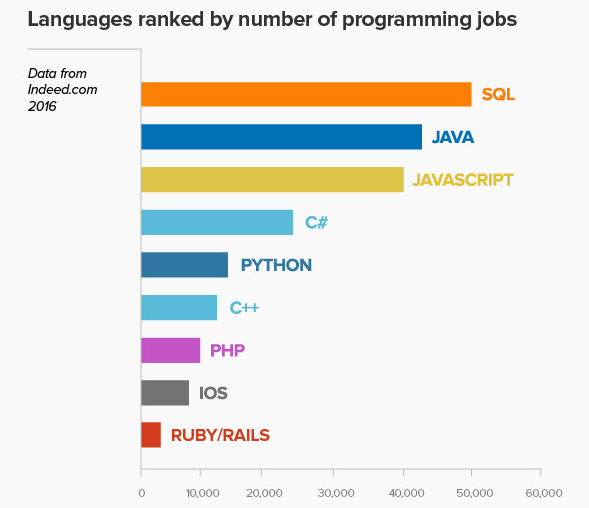
Tiobe - analyzes search queries:
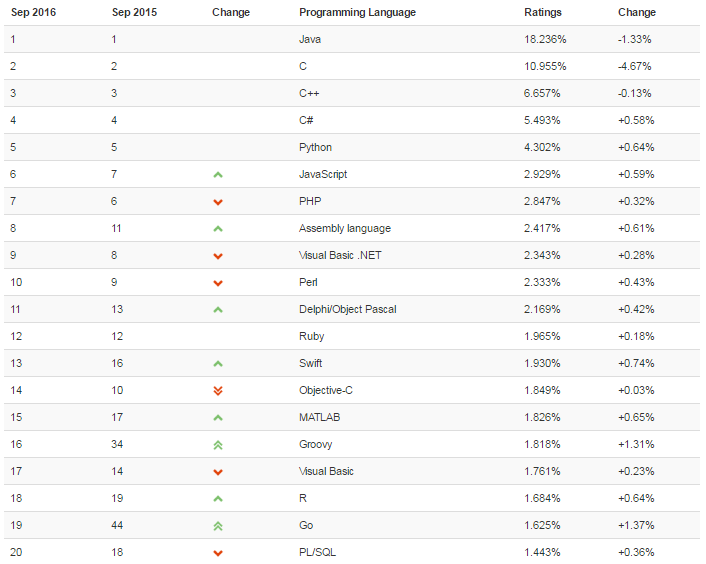
PyPl - estimates the popularity of educational materials on programming:
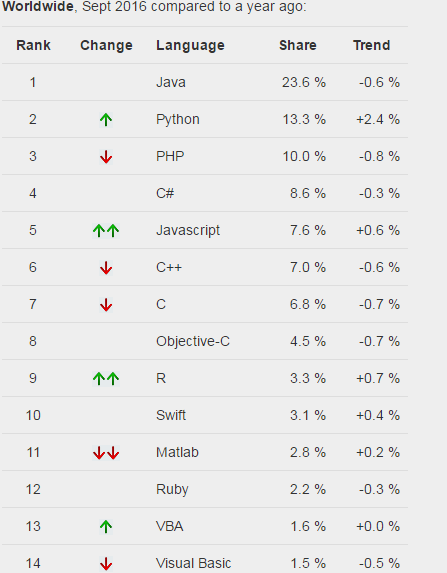
Summary Chart:
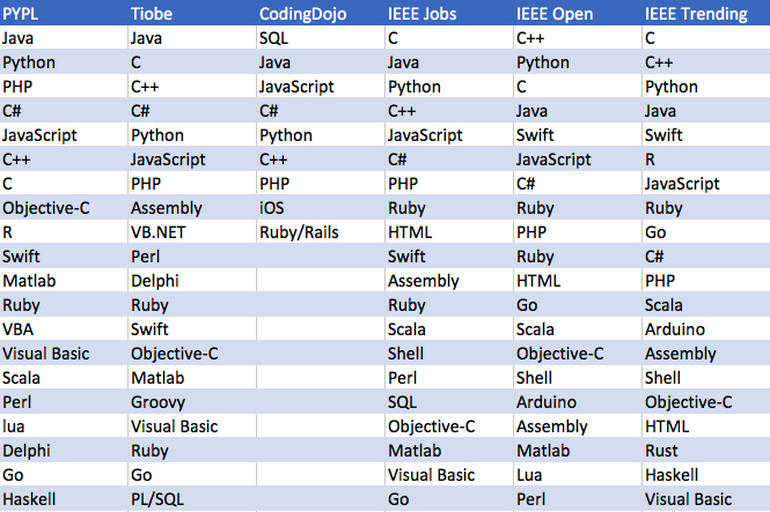
Gewert analyzed the frequency of occurrence of a language in the pivot table. After that, he chose the top ten and assigned each language to one of three clusters, based on the values of the listed metrics:

The colors indicate that the programming language belongs to one cluster or another.
findings
The first cluster includes Java, C, Python, and C ++. They are quite versatile and are not tied to a specific platform or application.
The second cluster is JavaScript, C #, PHP and Swift. Each language is tied to a specific platform.
However, the third cluster includes Objective-C, which is also de facto platform-dependent and is used to develop iOS applications. So far, Swift has not supplanted it.
According to the results of Coding Dojo, SQL is the absolute leader. However, SQL alone will not go far. Therefore, in the end, he did not hit the TOP-10.
Apple's development languages: Objective-C and Swift - turned out to be less popular than iOS fans would expect. The popularity of Objective-C is falling, and Swift has not yet gained momentum.
Therefore, Gewerts recommends that beginners choose to learn Java or C ++. However, he notes that knowledge of several languages and frameworks is very helpful in the work, so you should not scornfully treat the less popular ones.
In addition, the IT industry is changing rapidly, and tomorrow other languages and technologies will already be included in the TOP, which cannot be ignored when forming your own plans for mastering a particular technology or language.
Source: https://habr.com/ru/post/311152/
All Articles